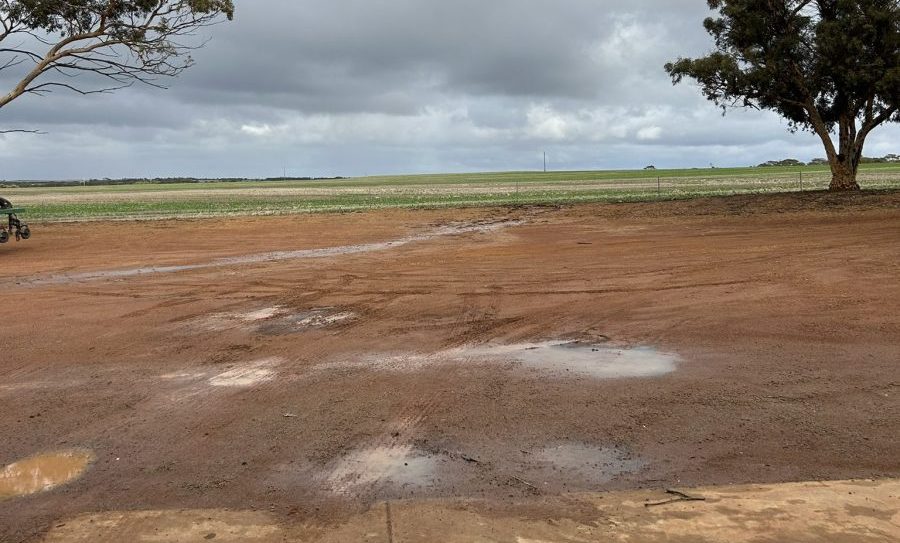
The WA grainbelt has had ideally timed rain in the past week. Photo: Tim Barndon Jr, Kulin
RECENT rain across the grainbelt of Western Australia has topped up crops in the central regions and other areas where crops have germinated, according to the Grain Industry of WA monthly crop report released today.
“This is the break growers were waiting for in the drier regions to the north and south of the state,” the report said.
“Rainfall across the majority of the WA grainbelt over the past week has transformed the season’s grain production potential from one of below average to at least average or above average.
“A week ago, emerged crops were showing signs of moisture stress and much of the northern and southern grainbelt was dusty and brown.
“These rainfall events will germinate crops that were sown dry, and those that had emerged will now take off and have reasonable yield potential.”
GIWA is forecasting WA’s winter crop which has been recently planted at 8.53 million hectares (Mha), up from 8.3Mha forecast in its initial estimate released last month.

The report said the northern third of the state’s grain-growing regions was “looking down the barrel of a very poor year” until last week, with few crops emerged and low levels of subsoil moisture.
“That has since changed with several good falls of rain over several days, in some cases exceeding the average rainfall for the whole of June.
“The year-to-date rainfall for the whole state, excluding those in the eastern edges of the grainbelt, is now at levels where reasonable tonnages of production are possible.
GIWA said the “jump” in crops that had germinated prior to the rains was noticeable, and they will recover grain yield potential that was fading during May.
The whole of the Kwinana South zone, and the southern portion of the Kwinana Northeast zone are now in nearly as good a shape as this time last year.
“The northern portion of the Kwinana north-east zone and the Geraldton zone are back in the race for average grain yield potential, although these regions are going to need more good winter rains for this to occur.”
The report said western and southern portions of the Albany port zone are behind in growth stages compared to this time in 2022, and have lower subsoil-moisture reserves.
“The Lakes district is well behind where it was in 2022, with the majority of crops emerging only on the recent rains.
“This is not too late for average grain-yield potential to be achieved but as much of the crop will be at a similar growth stage, even though later than last season, could mean frost will have a greater impact over a wider area.
The Esperance zone was in desperate need of the recent rains, and the coverage over the region was patchy, with some of the drier areas unfortunately missing out once again. The subsoil moisture reserves from harvest are still there, and the later sown and emerged crops will now be able to get their roots down into it.
Source: GIWA
Further detail on crop conditions in individual WA port zones can be found on the GIWA website.
